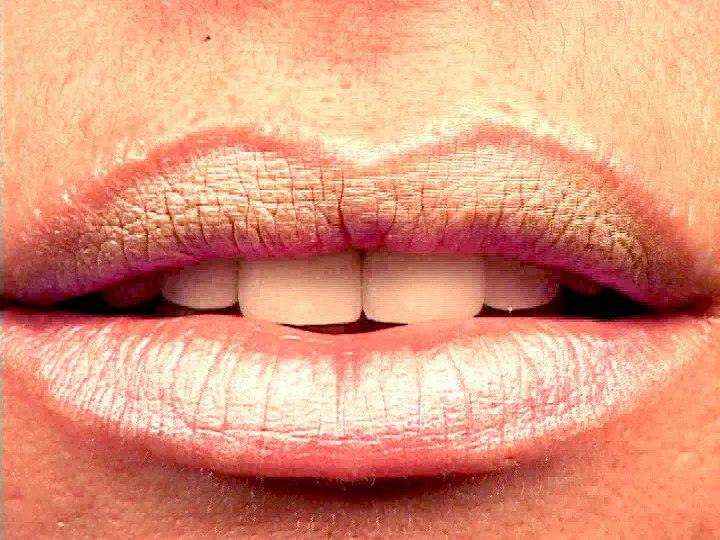In "Brainwashed", shown in the former air shelter at Haus der Kunst, mechanisms of manipulated vision and emotions, as well as attitudes of reception in event societies influenced by these mechanisms, become tangible. A tour through the exhibition.
“Brainwashed” is dedicated to the phenomenon of the pop-cultural mainstream, which reached its peak in the early 2000s. Characteristic of this mainstream were media formats such as reality TV, Hollywood film productions with the claim of being global events, an advertising industry dominated by self-optimisation and an international star cult pushed by a plethora of music videos.
The artists brought together here critically reveal commercial visual languages, their contradictory promises and clichés. The selection of works from the Sammlung Goetz makes links between business, media and politics visible with the aim of influencing the public and maximising profit. The visitor enters the individual cabinets via a corridor bathed in cool blue light. According to the ‘wheel of emotions’ used in advertising, this shade of blue causes surprise and confusion.

Bjørn Melhus
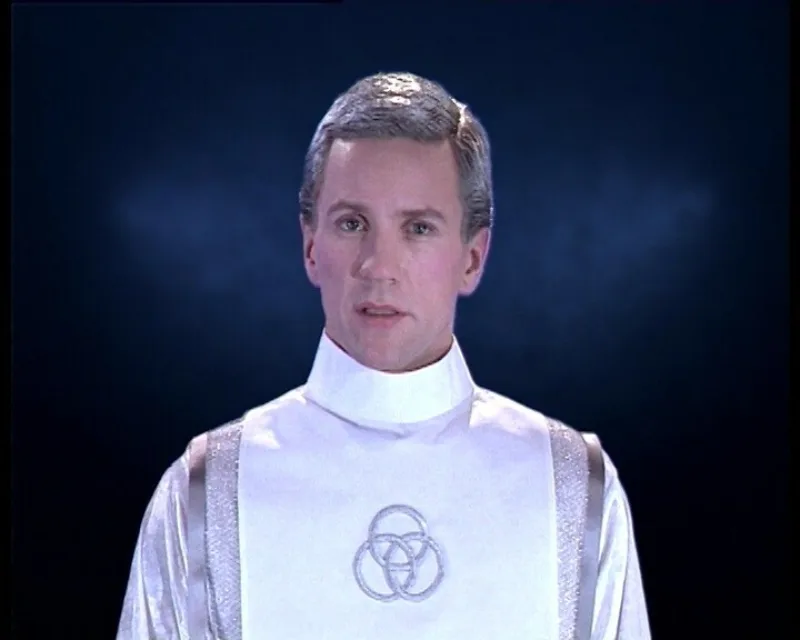
The tour begins with Bjørn Melhus. In “The Oral Thing” (2001), he plays the host of a staged talk show, in which he is confronted by his own clones. Two siblings speak with children’s voices, and their statements could be taken from any average American family talk show in which private conflicts are publicly discussed. Both the guests and the host constantly repeat themselves – the recurring question-and-answer practice is reminiscent of certain concepts of psychological manipulation. With his clothing and habitus, Melhus takes on the role of a saviour. The aim is to suggest to the viewers a form of identification by means of everyday human problems and to establish a personal, emotional connection to the respective TV format. Melhus presents his guests only for the purpose of entertainment and in this way deconstructs reality TV.
Cheryl Donegan
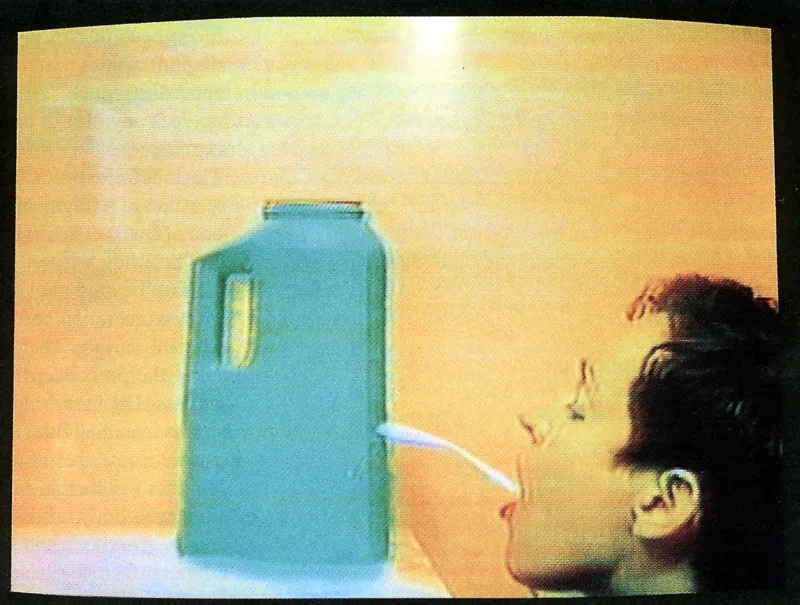
In Cheryl Donegan’s video “Head” (1993), we see the artist herself. She is dressed in an eye-catching purple sports bra and, accompanied by loud pop-rock music, tries to catch a stream of milk flowing from a plastic jug into her mouth. The movements of her kissing mouth and her body as sexually connoted actions make the scene appear all that more absurd. Donegan caricatures common notions of a submissive woman by drawing on images of femininity shaped by mass culture and the genre of music and work-out videos.
Shana Moulton

The title of Shana Moulton’s video “Whispering Pines 9” (2009) refers to the place where she grew up, a trailer park in California. Her alter ego Cynthia is a seeker of meaning influenced by the New Age movement. Walking in the footsteps of a spiritualism that had its origins there in the 1950s, the figure of Cynthia illustrates the urge for self-improvement in a society that has become increasingly dominated by capitalism.
Pipilotti Rist
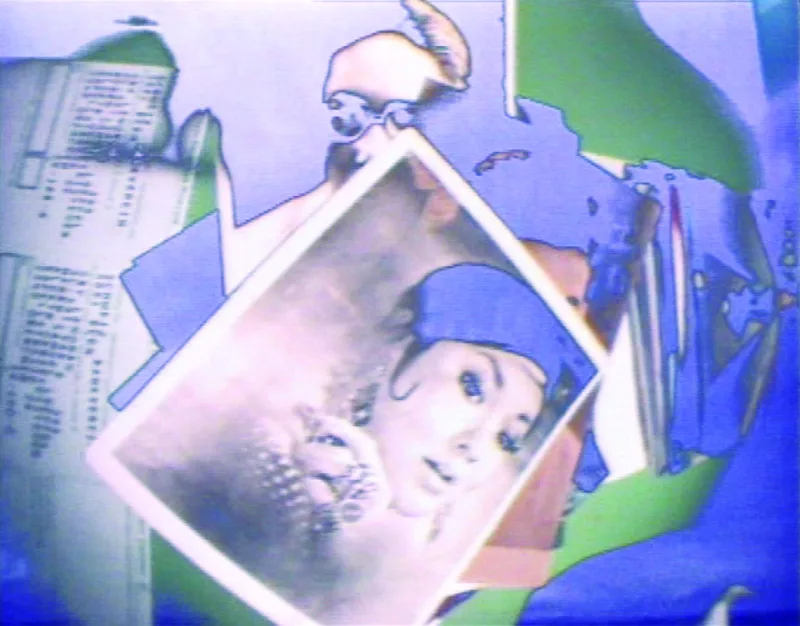
In “I’m a Victim of this Song” (1995), Pipilotti Rist combines images that recall the supermodel Helena Christensen on a beach in Chris Isaak’s music video ‘Wicked Games’ with seemingly random shots from her own personal, everyday life. In combination with these two levels of images, the cult song sounds a bit slower. The work vividly illustrates how little the mass media images that have crept into our subconscious actually have in common with our own real lives.
Ryan Trecartin
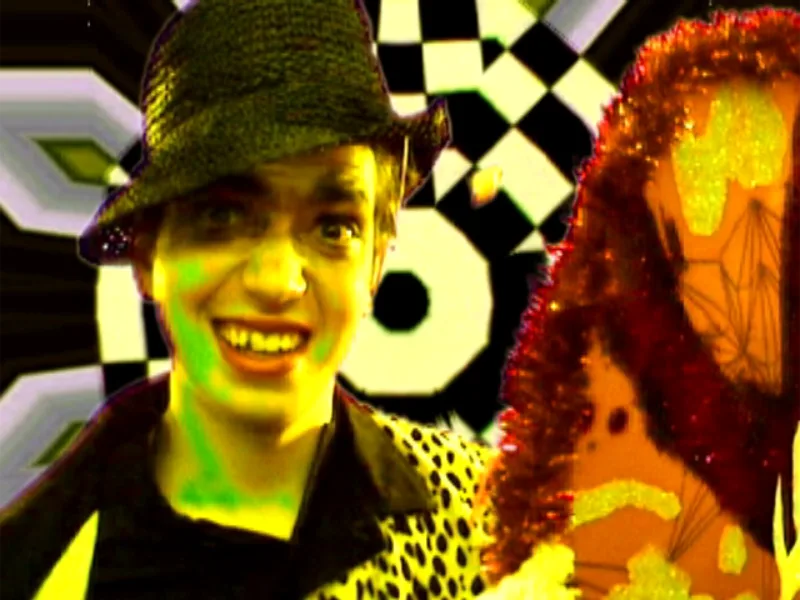
Ryan Trecartin also uses the techniques and motifs of music videos – or their amateurish re-enactment in the private sphere – such as fast cuts, frontal close-ups and garish costumes, in order to reflect on the self-representation of the media and cultural role attributions. “What’s the Love Making Babies For” (2003) is a stimulus-satiated collage of digital and real images and effects, accompanied by loud, abstract sounds. It forms the backdrop for a conversation that revolves around the abolition of gender.
assume vivid astro focus
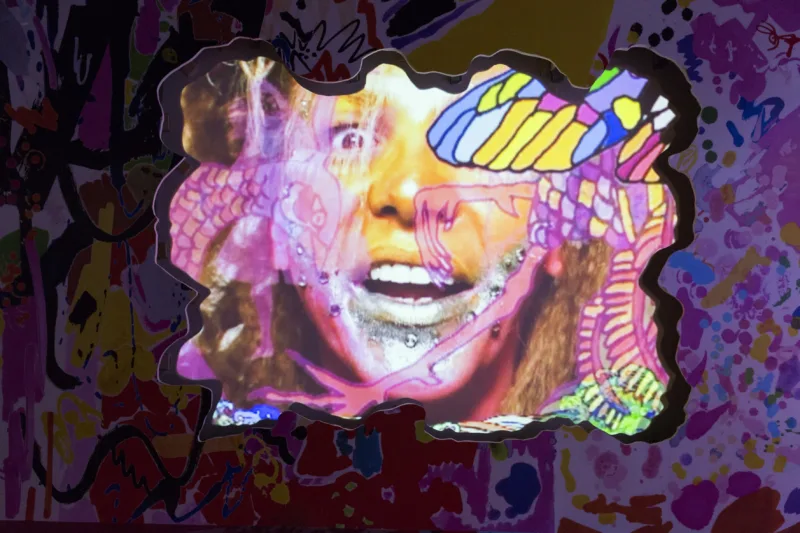
The artist collection assume vivid astro focus (avaf) also undermines binary gender concepts, such as those often propagated in music videos. The song “Walking on Thin Ice” is heard here in the shrill version of the transgender Carla Machado. Young performers celebrate exaggerated femininity. They present themselves scantily dressed, putting on make-up, singing, dancing and flirting with the camera and the audience. The individual sequences are cross-faded with colour distortions and overexposures. The perception of the performers is thus determined by various overlapping layers of reality and simulation. avaf parodies the supposedly emancipated pop culture of the millennium.
Wolfgang Tillmans
In contrast, Wolfgang Tillmans completely ignores interpersonal aspects. Instead, he focuses on the captivating interaction of music and light. In “Lights (Body)” (2000-02), beams of light flash to the fast beat of electro house music. But what happens on the dance floor remains invisible. In the 1990s, techno clubs, which originated as sites of an alternative lifestyle culture, increasingly developed into a mass phenomenon, the parties becoming important social events in large cities such as Berlin and London.
Paul Pfeiffer
In “Live Evil (Bucharest)” from 2004, Paul Pfeiffer takes on a true pop idol. Here, we see Michael Jackson performing his moonwalk, whereby the image of the star is alienated by doubling and mirroring. The result is a literal montage of Jackson’s media image, through which the actual person is deconstructed. Here, Pfeiffer reflects on collective perception and how it is significantly influenced by the media.
Seth Price
In Seth Price’s “Rejected or Unused Clips, Arranged in Order of Importance” (2003), the voice of a computerised narrator speaks about the increasing importance of religion in the USA. Historical footage of fighter jets, amateur films with scenes of physical violence and pain, but also cat videos are juxtaposed with visions of a purportedly better world and technical developments. The artist celebrates the contradictory coexistence of facts, faith and hope in the media that surround us every day.
Ryan Gander
In “Image of a Lightbulb (LAX)” (2011), Ryan Gander appropriates image sequences from the Internet to draw the viewer’s attention to the flood of images and information of the twenty-first century. With his selection of a smartphone fan portrait, the results of a Google search or film footage, a continuous maelstrom of references to pop and media culture, private and public, unfolds. He lends vividness to individualised narratives of the past and the present, such as those disseminated by the Internet every day.
